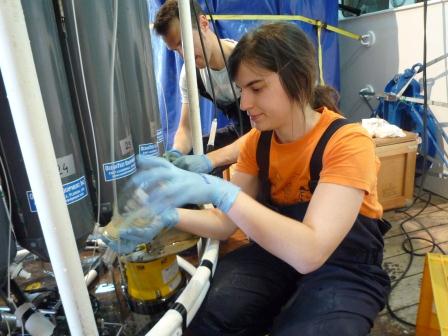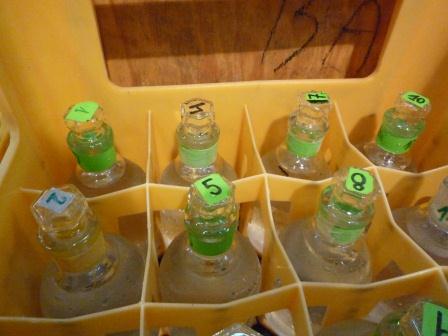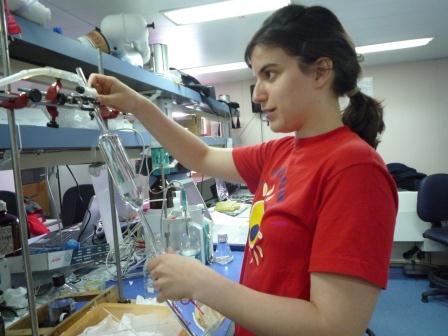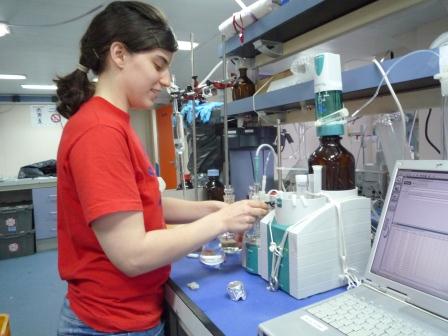ALKALINITY
Another variable the system of carbonic is the alkalinity. The seawater has a buffering capacity to neutralize the acids. Throughout the cruise alkalinity samples were analyzed at all even stations.

THE MINECO SCHOLARSHIP HOLDER: Maribel, who has been awarded a grant by the Ministry of Economy and Competitiveness, to do her doctoral thesis with data of this scientific expedition, milks Rosita of samples for alkalinity.

JUST MILKED: Alkalinity samples labeled with the number of the oceanographic bottle. The lower the number the greater the depth. At 3500 m it may have temperatures below 2 º C, so the sample flasks just milked at these depths are fogged. Before to analyze them, there to wait for samples to reach room temperature.

PIPETTING IN VACUUM: 195 ml of sample are measured with the pipette Nunsen you see in the picture and is then poured into a beaker where it is analyzed. The water is sucked by a vacuum system.

VALUE ADDED: The sample is valued by adding hydrochloric acid to a pH of 4.4 fixed. Each sample will need a different volume of hydrochloric acid to reach this pH. All analysis data is recorded on that laptop, which calculates the index called the Value Added Tax (VAT), that at this time can reach 21%.










